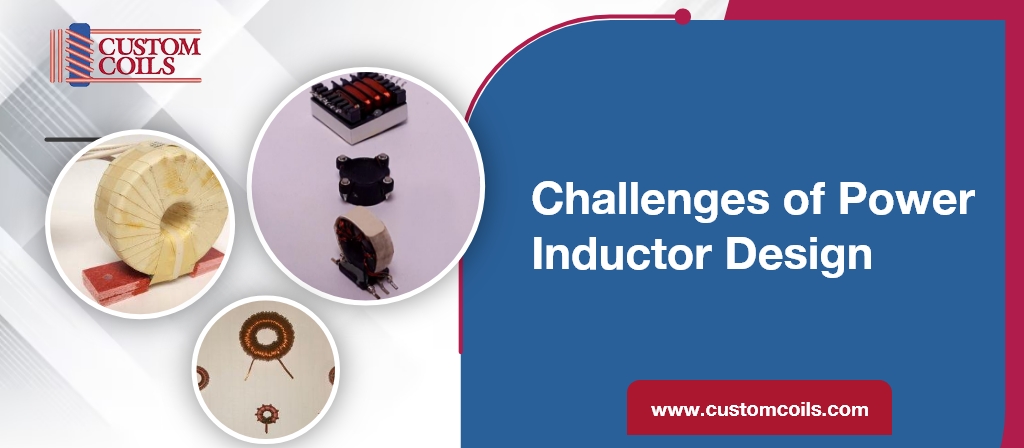Power inductors are the most critical and integral part of most electronic circuits, especially the ones that require voltage conversion. They act as energy storage devices and noise suppressors, ensuring low core losses that allow efficient power conversion. However, designing these electrical inductors is a challenging task. Like any electrical component, designing power inductors comes with its own set of challenges. Would you like to know more about these challenges and their solutions? Continue reading the post to know common challenges engineers face while designing power inductors and practical strategies to overcome them.

Common Power Inductors Design Challenges and Their Solutions
Here are some pointers that describe some common power inductor design challenges and their possible solutions.
- Thermal Management: This is a critical aspect of power inductor designing, aimed at dissipating heat generated during operation. If a high volume of current flows through power inductors, they become susceptible to heat buildup, leading to potential damage and efficiency loss. Engineers should select power inductors with low resistance and high saturation current ratings to ensure optimal performance and efficiency. Additionally, it is important to implement adequate heat-sinking techniques or thermal vias in the design.
- Core Losses: Core losses such as hysteresis and eddy current losses can reduce the efficiency of power inductors. Therefore, select core materials with low hysteresis and eddy current losses. Keep the operating frequency within the optimal range for the selected core material.
- Saturation: When the core material of the inductor reaches its magnetic flux density limit, saturation occurs. This drastically reduces the inductor’s inductance value, resulting in performance degradation and potential malfunction of the circuit. This can be avoided by carefully selecting the appropriate core material, size, and winding techniques based on the operating conditions and power levels of the circuit.
- Electromagnetic Interference (EMI): This is a significant concern in power inductor designing due to the magnetic fields generated during operation. Electromagnetic radiation is produced when power inductors handle high currents. This can interfere with nearby components and circuits, leading to signal distortions and performance issues. To mitigate EMI, designers must implement various techniques such as shielding layers in PCB layouts, magnetic shielding cans, and careful component placement. Placing decoupling capacitors near the inductor can also reduce radiated noise.
- Core Material Selection: The selection of core material plays a key role while designing power inductors directly impacting the inductor’s performance and efficiency. The choice of the core material has a direct impact on the parameters such as saturation current, inductance, frequency response, and so on. Thus, engineers should analyze the requirements of the intended circuit and the operating conditions to make informed decisions.
- PCB Layout and Parasitic Effects: The layout of the circuit board can introduce several parasitic elements such as inductance, capacitance, and resistance. These elements can adversely affect the behavior of power inductors. This can be overcome by minimizing the length and area of signal traces and loops, placing components properly, and more. Additionally, utilizing proper grounding techniques and maintaining good isolation between power and signal traces can further enhance the inductor’s performance.
Designing power inductors requires planning and attention to detail. By addressing these challenges and implementing appropriate solutions, engineers can achieve optimal performance and efficiency of electronic circuits. If your next electrical application demands power inductors, you must contact a reliable and highly experienced manufacturer and supplier like Custom Coils. The company offers different types of inductors, such as surface mount inductors, high current inductors, ferrite core inductors, and so on with a warranty period. The company is ISO 9001:2015 certified and has facilities to meet custom inductors requirements. Contact our team if you have any questions regarding power inductors or need to share your requirements.

